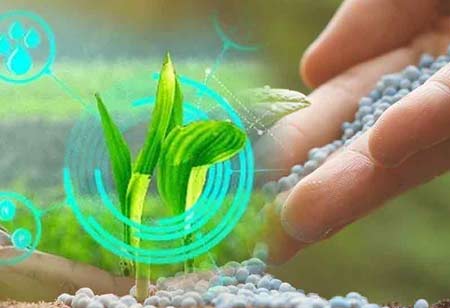Thank you for Subscribing to Agri Business Review Weekly Brief
Advantage Of Blockchain In The Agricultural Supply Chain
The food on your table may have wandered thousands of miles across states and countries before you bought it.

By
Agri Business Review | Monday, August 22, 2022
Stay ahead of the industry with exclusive feature stories on the top companies, expert insights and the latest news delivered straight to your inbox. Subscribe today.
The agricultural supply chain is the base of our economy. But it is haunted by inefficiencies. Blockchain technology could be the fix.
Fremont, CA: The food on your table may have wandered thousands of miles across states and countries before you bought it. There are frequently hundreds of players in this complicated supply chain. While this offers a great variety of consumer options, it also offers challenges.
Our agricultural supply chain is turning increasingly overstretched. Its ineffectiveness costs the economy around $400 billion each year. With increasing challenges from the climate crisis, getting a grip on this problem is more important than ever. Blockchain technology could aid solve the issues plaguing our agricultural supply chain.
Role of blockchain in supply chains.
Most people connect blockchain with Bitcoin. But the technology itself applies to many industries. Blockchain technologies are distributed cryptographic ledgers that anybody with the right keys can access.
Simultaneously, they cannot be altered or changed by anyone.
Hence, blockchains present secure, transparent stores of data that foster trust. Some explain blockchain’s value as a ‘single source of truth with no middlemen. This has several applications in the food industry. Consider, for instance, that 71% of consumers place a premium on traceability.
Along with Internet of Things (IoT) technology and data analytics, blockchains can offer a shared protocol for every actor in the supply chain to log and share data at each stage of the commodity’s journey.
The process can be employed to incentivize each participant to give critical and accurate data, driving down costs of inefficiencies, raising profits, and meeting government and consumer-driven sustainability and transparency goals.
Sustainable seafood example
To perceive how this works, let’s look at the hypothetical journey of a sustainably farmed salmon shipment. First, each fish is granted a tag with a QR code. This code holds all data about the origins of the salmon, comprising where it was farmed and how and when it was packed.
As the salmon moves with each stage of the supply chain, key parameters and transactions are recorded. It is likely for any actor in the supply chain to see the status of the salmon, comprising its temperature. More significantly, it is possible to see what has occurred at every stage and who was involved.
Once the salmon reach retail shelves, the customer can employ that same code to discover the origin of the fish and confirm that it has been sustainably fished.
This process has several implications. First, it makes it far easier to identify and eliminate bad actors in existing supply chains. It also makes it possible to pinpoint contamination quickly.
Lastly, it gives consumers, and food retail proven provenance and traceability. This can also support downstream players like hotels and restaurants to satisfy consumer preferences while boosting their brands.





